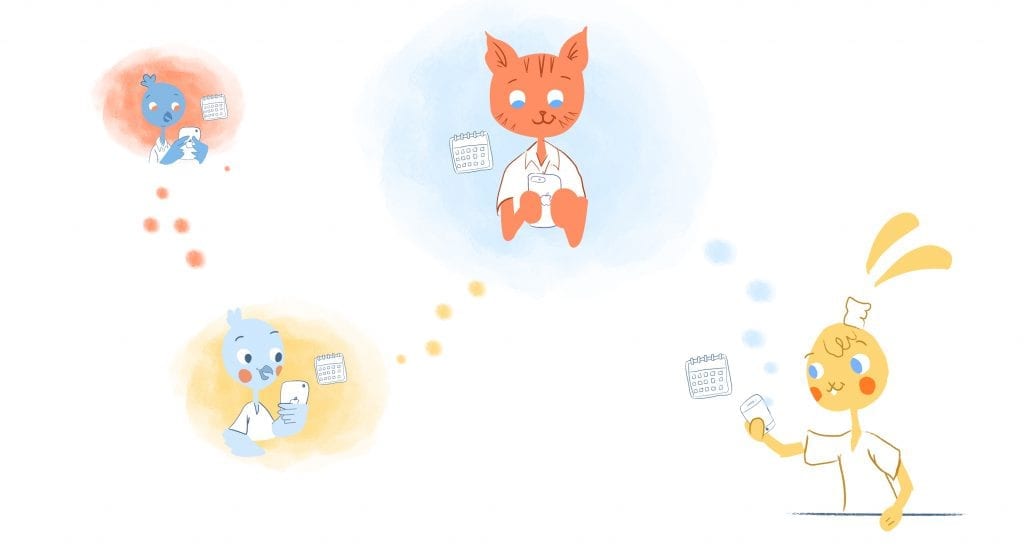

In the corporate world, your calendar is your bread and butter. It houses your schedule, informs the priority of your workday, and dictates where your time will be spent. So, it’s no wonder this entity is a primary focus for workers and leaders alike.
But when you live and die by your schedule, it’s only natural to be curious about its privacy. What can everyone see when they go to book a call? How much control do you have over your information? If you hope to learn more about managing your calendar, you’re in the right place. Here are a few things visible to coworkers you may not have known about.
Privacy in the Workplace
The concept of privacy at work is a tricky one to grasp. You’re navigating working on a company-owned computer that connects to company-managed wifi. As such, working at all is inherently not very private. However, that doesn’t mean you’re not entitled to know what your coworkers can and can’t see.
Something important to consider: Every company will have a slightly different approach to privacy. Some highly support transparency and require everyone’s calendar to be visible to everyone else. Others are more in favor of giving employees the freedom to have private calendar blocks at their discretion. And still, some fall somewhere in the middle.
So, the best starting point is to determine which of these categories your company falls into. Understanding how visible (or not) your calendar is can influence how you approach it, and that can make all the difference.
1. Meeting Details
Many meetings are run-of-the-mill — touching base on projects, talking with leaders, and the like. However, certain meetings have a higher level of importance to them. You could review performance, create a career path, or discuss a touchy situation with human resources. These meetings aren’t ones you’d like anyone and everyone to be aware of.
That, however, doesn’t mean they’re always private. If your company runs on a transparency-first basis, details included in meetings may be displayed to everyone. All it takes is for a coworker to view your calendar to see when you’re available. From there, they’re only a few clicks away from unveiling your meeting information. So, think twice about how you add your information if your meeting requires more discretion or if you need to share a document containing sensitive information.
Of course, you don’t have to resign because your private meeting isn’t so private. Opt for a brief but effective meeting agenda, including its title and password-protect attachments to keep them secure. Or use the private option for sensitive meetings — this feature is available in most calendar tools like Google Calendar and Calendar. That way, no matter what you’re discussing, your conversations can stay between you and those on the call.
2. Availability Status
A more obvious thing coworkers can view on your schedule is your availability. However, some nuances make this an important piece of information to know. The biggest is how various calendar systems sync with other tools you use.
You probably use many tools if you rely on digital resources for work. Your calendar is simply one piece of the bigger puzzle. You likely have a messaging system, an email provider, and a project management tool. You may even have technology that enables brainstorming and collaboration to boot.
So, while your calendar may show if you’re free, in a meeting, or out of office, that’s not information that’s held in a silo. Depending on what systems you use, it may automatically sync with your other tools. With that in mind, verify your calendar is accurate to ensure coworkers are informed. Specifically, if you’re unavailable, it’s valuable to note that on your calendar. Otherwise, you may return to many unanswered messages and missed calls, making time management a nightmare.
3. Personal Appointment Blocks
Whether you have a doctor’s appointment booked or need to pick your kids up, it’s probably visible to coworkers. That’s because many companies automate calendar share settings to include detailed information about time blocks. So, what does that mean for your daily work routine?
Well, colleagues will be able to see your schedule in detail for every minute of the day. Now, on a routine basis, this may not be that bad. However, there are some scenarios in which personal calendar blocks are just a bit too personal. For instance, a doctor’s appointment for a rash you’ve been struggling with is probably best to keep to yourself.
When something pops up in your personal life that needs to happen during the work day, block the time. But also keep the visibility into your workday in mind. Opt for generic names like “doctor’s appointment” versus “cure my rash” to help preserve some privacy. You’ll still have an intact schedule but won’t be oversharing if coworkers happen upon your calendar.
4. Your Meeting Analytics
Gone are the days of your typical calendar. Instead, schedules are enhanced with functionality that can give insights into your tendencies. These calendar analytics are specific enough to learn who you meet with most frequently and how long your meetings last. Those averages are all put into a dashboard for you to glean insights.
Though great as these insights are to have, they’re also not exclusively yours to see. Depending on your company’s share settings, your coworkers can also review your data. This information is usually shared with leaders, but sometimes it can be peers or direct reports.
The good news? Most of the time, this information is just a nice-to-know versus something actionable. You may adjust your behavior if anything stands out, but it’s not always necessary. Sometimes, it’s just a good insight to have in your back pocket so you can better optimize your work day. Still, reviewing your settings is your best bet if you’d rather that information be limited to just you.
5. Working Location
With a rise in remote and hybrid work, it’s no wonder people are working in various locations. There’s no shortage of options in coffee shops, at their friend’s homes out of town, or on the go with wifi. And, you guessed it, your work location isn’t always private on your calendar either.
When someone goes to schedule a call, they can see if you’re free or booked. However, many calendars will also display the time zone you’re working in and possibly the general location. This facilitates scheduling and makes coordination easier, but it can also be a giveaway if you’re not in your usual spot.
On a typical day, this isn’t that big of a deal. But it could complicate things if you have to work in a specific area or don’t update your leader. If you’d rather not share your location details, see if you can turn them off. Otherwise, prioritize transparency with where you’re working to avoid issues.
Get it Booked
Your work calendar is relevant to large chunks of your week. It dictates where you’ll spend your days, energy, and brain power. As such, it’s an integral part of your professional life. That, however, doesn’t mean you want to share it all.
Whatever your reason, keeping certain blocks of time private is a nice option. You can control more of your day, better balance work and life, and avoid feeling overexposed. It requires planning and understanding your company’s policies toward share settings. Regardless, it’s best to consider who can see the information you put on your schedule before inputting it. With this information in tow, you just might decide to make a few edits.
Featured Image Credit: Photo by Christina Morillo; Pexels











Angela Ruth
My name is Angela Ruth. I aim to help you learn how Calendar can help you manage your time, boost your productivity, and spend your days working on things that matter, both personally and professionally. Here's to improving all your calendars and becoming the person you are destined to become!